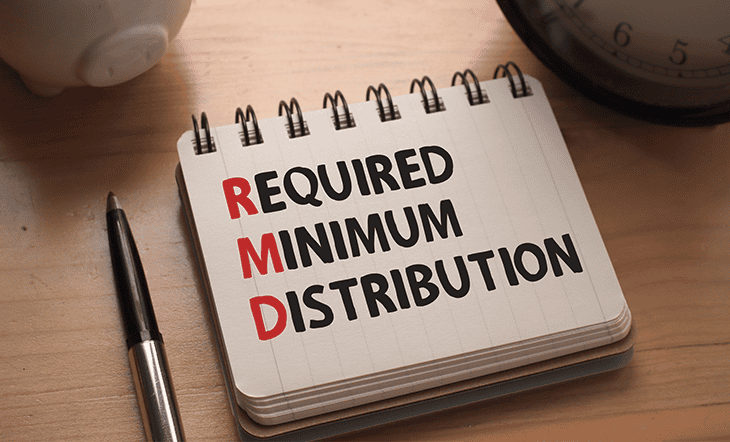Tax-efficient investing is an essential part of financial success and wealth creation. Since the government taxes all your income, it is crucial to follow the necessary steps to reduce your taxable income. This can be done in a number of ways. However, choosing the correct investment accounts can be the first step. Earning income or making investment profits is only half the job done. The other half is to protect it from external factors that can damage your financial well-being. Taxes can lower your profits and severely affect your lifestyle. Therefore, it is essential to plan your investments from the point of view of tax.
With a multitude of investment and savings options in the market, understanding the impact each can have on your tax output is essential. Consult with a professional financial advisor who can advise you on different kinds of investment accounts, their pros and cons, and how you can maximize their benefits to lower your taxes. Find out more about the different types of accounts and how they can help you save tax.
Table of Contents
Types of investment accounts
There are three types of investment accounts categorized on the basis of tax-taxable, tax-deferred, and tax-exempt:
What is a taxable account?
A taxable investment account is an account that does not offer any tax benefits, such as an exemption or a deduction. Such accounts also do not provide the possibility of tax-deferred growth either. Any money you make from these accounts is taxed according to the prevailing tax laws. The most common example of a taxable investment account is the brokerage account. A brokerage account can be opened with a brokerage firm and is used for investing in multiple securities like stocks, etc. Depending on the broker and the services you use or opt for, you may have to pay a brokerage fee. Earnings from a brokerage account are entirely taxable, including capital gains, interest earned, and dividends received.
What is a tax-deferred account?
A tax-deferred account postpones your tax liabilities to the future. These accounts do not exempt you from tax, but they remove the burden of immediate tax payments. You only pay tax when you withdraw your funds in the future. This can be in retirement or after a specific age limit. The tax rate is levied according to your annual income for the year of withdrawal. Some common examples of tax-deferred account types include the traditional 401k, Individual Retirement Account (IRA), 403b account, annuity plans, and others. So, if you choose a traditional 401k, you will not pay any tax on your contributions. Instead, you will pay tax when you withdraw your money after the age of 59.5 years.
What is a tax-exempt account?
A tax-exempt account is the opposite of a tax-deferred account. It does not offer you a tax deduction in the present. However, you can claim tax-free withdrawals in the future. This means your contributions are made from after-tax dollars. The most common example is the Roth 401k and Roth IRA. If you select any of these, you can make tax-free withdrawals after the age of 59.5 years. Any withdrawal before that attracts a 10% penalty and income tax. Other famous examples of tax-deferred accounts include the Roth 403b account, the 529 education savings account, and the Health Savings Account (HSAs).
How can you use tax-advantaged accounts to save tax?
Tax-deferred and tax-exempt accounts are essential if you wish to lower your tax liabilities. These accounts not only help you save tax but also create wealth for your future needs. For example, the 401k and IRA are two of the most popularly used retirement accounts. They can help you secure your retirement financially, save tax, and above all, live with peace of mind. However, it is crucial to maximize the profits from these accounts.
The following tips can help:
1. Contribute up to the limits of each retirement account:
As of 2022, the contribution limit for a 401k retirement account is $20,500 per year for people below the age of 50. For those aged 50 or more, there is an additional catch-up contribution of $6,500 per year, raising the total to $27,000. The maximum contribution limit for employee and employer contributions is $61,000 for 2022 for those under 50 and $67,500, with the catch-up contribution for those aged 50 or over. Similarly, the contribution limit for an IRA as of 2022 is $6,000 per year for people below the age of 50. For those aged 50 or more, there is an additional catch-up contribution of $1000 per year, raising the total to $7,000.
One of the best ways to save on tax can be to maximize your contributions to these accounts. The Internal Revenue Service (IRS) sets the limits that can differ for each year. Make sure to stay up to date with these changes to make the most of your accounts. For instance, the contribution limit for a 401k was $19,500 or $26,000 in 2021. However, they were increased by $1,000 in 2022. This gives you an additional $1,000 of tax-deferred or tax-exempt money.
2. Have a smart asset location strategy:
Your 401k or IRA is made up of multiple investments, like stocks, bonds, mutual funds, target date funds, certificates of deposit, exchange-traded funds, and more. Each of these accounts has a unique tax treatment. For instance, profits from stocks are subjected to capital gains tax. But there are multiple ways to invest in stocks. You can invest in them through your brokerage account, which is a taxable investment account. Or, you can invest in them through your non-taxable accounts, such as a 401k or an IRA. Ideally, it makes sense to use your non-taxable accounts to invest in instruments that attract high taxes. Conversely, you can use your taxable account to invest in low-tax generating instruments, such as bonds.
Matching your investments to the proper accounts is as important as selecting the investments. Typically, high tax investments can include individual stocks, equity index mutual funds, and tax-managed equity funds, whereas low tax instruments include bonds, municipal securities, municipal mutual funds, etc.
3. Invest for the long-term and be consistent:
Retirement accounts like the 401k and the IRA are, by definition, long-term accounts. They have strict withdrawal rules that prohibit you from withdrawing funds before the age of 59.5 years. Moreover, in the case of an IRA, you also have to maintain the account for at least five years before you can make a penalty-free withdrawal. However, having said that, it is still essential to be consistent and use these accounts steadily for a long time to truly maximize your tax benefits. If you choose a traditional 401k or IRA at the age of 30 and invest in it till 60, you can gain 30 years’ worth of tax savings. Hence, you will be able to save tax for 30 years before you are taxed in your retirement. These savings can further be invested in investments, used to repay your debt, buy financial assets, such as a home, and more.
What are some other strategies to save on tax?
Apart from using non-taxable accounts, you can also use the following strategies to save tax:
1. Tax diversification:
Tax diversification is similar to portfolio diversification. Usually, when you diversify your portfolio, you select investments from different sectors or market capitalizations to lower risk. Under tax diversification, you choose different instruments to lower taxes. For example, if you only use traditional 401k and IRA accounts, you push all your tax liabilities to the future. In the event that you land up in a higher tax bracket in the future than right now, you will have to pay higher taxes. However, suppose you follow the principles of tax diversification and invest in a traditional 401k and a Roth IRA. In that case, you will pay some tax now and some in the future and balance out the liabilities between the present and the future.
2. Invest for the long-term:
A long-term approach can have many advantages. It ensures financial discipline, lets you ride out short-term market volatility, and helps you save tax. Capital gains are taxed in two ways – short-term capital gains and long-term capital gains. The former is added to your ordinary income for the year and taxed according to the tax slab you fall into for the year. As of 2022, there are seven federal tax brackets – 10%, 12%, 22%, 24%, 32%, 35% and 37%. This means that you can be charged as high as 37% on your short-term gains. On the other hand, long-term capital gains have only three tax slabs- 0%, 15%, and 20%. Even at the highest tax rate, you end up paying a lot less than the whopping 37%. Moreover, with the power of compounding, you would also have earned more from your long-term investments.
3. Use tax-loss harvesting:
The stock market is an unpredictable and volatile place. For all the gains you make, you may also incur losses. However, you do not have to suffer from these losses. You can use them to your advantage through tax-loss harvesting. Tax-loss harvesting lets you offset your investment gains with losses incurred in a year. According to the rules of the IRS, you can write off a total of up to $3,000 in a financial year in short-term and long-term capital losses against your short-term or long-term capital gains. However, you must follow the wash-sale rule. The rule states that you cannot buy the same stock and sell it at a loss for tax purposes 30 days before or after you make the sale.
4. Rebalance your portfolio carefully:
Rebalancing your portfolio can be necessary for a number of reasons, including tax savings. Rebalancing can increase your tax liabilities. When you rebalance your portfolio, you may buy some assets and sell others. This can add to your tax liability for the year by triggering long- or short-term capital gains. When rebalancing your portfolio, keep tax considerations at the back of your mind and do not make decisions only on the basis of profits and losses. Pay equal attention to tax.
5. Plan your estate:
Estate planning is critical to lowering your tax liabilities. The distribution of your assets can trigger tax for your beneficiaries. However, you can make use of strategies, such as lifetime gift exemption, etc., to claim tax benefits. Charities also help lower taxes.
6. Take help from a financial advisor:
Financial or tax advisors can help you understand your tax liabilities, find ways to reduce them, and offer guidance on creating a tax-efficient investment portfolio. Tax laws are constantly changing in the country, so finding a way to reduce your taxes the right way is essential. A financial advisor can offer a professional point of view on the matter and help save your hard-earned money.
To summarize
Measures like the asset location strategy, using tax-efficient accounts, diversifying your investments, etc., can offer you many advantages. They lower your tax output, provide an opportunity to build wealth, and help you live the life you always wanted. It is vital to use them wisely to your benefit and save tax whenever and however possible.
If you need further assistance in finding and implementing effective tax saving strategies, you can also get in touch with a professional financial advisor. Use Paladin Registry’s free advisor match tool and get matched with 1-3 qualified advisors who may be able to help you with your unique financial goals and requirements.
To learn more about the most suitable tax-saving strategies for your specific financial requirements, visit Dash Investments or email me directly at dash@dashinvestments.com.
About Dash Investments
Dash Investments is privately owned by Jonathan Dash and is an independent investment advisory firm, managing private client accounts for individuals and families across America. As a Registered Investment Advisor (RIA) firm with the SEC, they are fiduciaries who put clients’ interests ahead of everything else.
Dash Investments offers a full range of investment advisory and financial services, which are tailored to each client’s unique needs providing institutional-caliber money management services that are based upon a solid, proven research approach. Additionally, each client receives comprehensive financial planning to ensure they are moving toward their financial goals. CEO & Chief Investment Officer Jonathan Dash has been covered in major business publications such as Barron’s, The Wall Street Journal, and The New York Times as a leader in the investment industry with a track record of creating value for his firm’s clients.
Other posts from Jonathan Dash
Here’s Why Every Tax Season is a Good Time to Revisit Your Financial Investments
The tax season is the perfect time to take a closer look at your financial investments. The 2025...
3 Key Financial Habits That Set Wealthy Retirees Apart
The wealthy may seem to have it all figured out, but their success is the result of years...
Things You Should Know About RMDs if You Are Turning 73
Retirement accounts like the 401(k) and the Individual Retirement Account (IRA) are broadly classified as traditional, and Roth based on their taxability....




